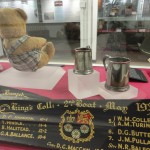The data used in the Guardian article quoted from below, on how life expectancy varies across the country, deserved mapping. I’ve focused on UK male life expectancy, which according to the Office of National Statistics varies by 13.3 years between Glasgow (71.1 years) and Kensington and Chelsea (84.4 years).
Map removed as Google Fusion Tables no longer works.
Red pointers represent male life expectancy of less than 75; pink from 75 up to 77; yellow from 77 up to 79; green from 79 up to 81; and blue 81 and over.
If you click on a pointer, you can find out how much longer men in that area can expect to live than Glaswegians, and how much less than residents of Kensington and Chelsea (and tweet it if you wish). Female life expectancy is also included. Continue reading “UK male life expectancy mapped, from Glasgow to Kensington”



